| Srl | Item |
| 1 |
ID:
068196
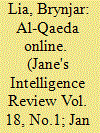

|
|
|
| 2 |
ID:
075679
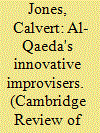

|
|
|
| 3 |
ID:
062387
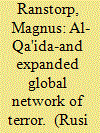

|
|
|
| 4 |
ID:
083701
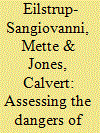

|
|
|
|
|
| Publication |
2008.
|
| Summary/Abstract |
Theoretical work on networked organization informs a large swathe of the current literature on international organized crime and terrorism in the field of international relations. Clandestine networks are portrayed as large, fluid, mobile, highly adaptable, and resilient. Many analysts have concluded that this makes them difficult for more stable, hierarchical states to combat. The prevailing mood of pessimism about the ability of states to combat illicit networks, however, may be premature. International relations scholars working in the area have often been too quick to draw parallels to the world of the firm, where networked organization has proven well adapted to the fast-moving global marketplace. They have consequently overlooked not only issues of community and trust but also problems of distance, coordination, and security, which may pose serious organizational difficulties for networks in general and for illicit networks in particular. Closer attention to a wider body of historical and contemporary research on dynamics of participation in underground movements, the life cycle of terrorism and insurgency, and vulnerabilities in organized crime reveals that clandestine networks are often not as adaptable or resilient as they are made out to be. An analysis of the al-Qaida network suggests that as al-Qaida adopts a more networked organization, it becomes exposed to a gamut of organizational dilemmas that threatens to reduce its unity, cohesion, and ability to act collectively.
|
|
|
|
|
|
|
|
|
|
|
|
|
|
|
|
| 5 |
ID:
080882
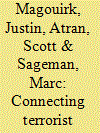

|
|
|
|
|
| Publication |
2008.
|
| Summary/Abstract |
This article highlights initial findings from the authors' Global Transnational Terrorism (GTT) Project, which began in August 2006. The case study draws on the database work for Southeast Asia and charts the rise of a militant minority within Jemaah Islamiyah, which was directly responsible for a series of attacks from 2000-2005. The important but restricted role of radical madrassahs and the importance of kinship emerge clearly from the study. On a more theoretical plane, the article shows how leadership "niches" opened up by unplanned events create contingent opportunities that lead to new developments.
|
|
|
|
|
|
|
|
|
|
|
|
|
|
|
|
| 6 |
ID:
133607


|
|
|
|
|
| Publication |
2014.
|
| Summary/Abstract |
Cyber terrorism is a phenomenon that is gaining more and more attention. One reason for this is the concern that modern information and communications technology may be used in order to harm open societies. This concern also involves actual IT systems and the information generated being targets of advanced attacks. That way functions that are important to society could be affected. The term 'cyber terrorism' is complex. This article describes the difference between traditional and cyber terrorism. The main focus is on how the al-Qaeda terrorist network acts in cyberspace and how their change in concentration and activities has made them a clever player in an electronic Jihad.
|
|
|
|
|
|
|
|
|
|
|
|
|
|
|
|
| 7 |
ID:
133609
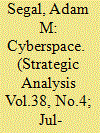

|
|
|
|
|
| Publication |
2014.
|
| Summary/Abstract |
In June 2013, President Obama met with President Xi Jinping at Sunnylands, California. The meeting was seen as a chance for the two leaders to get to know each other in a relatively informal setting so they could address the growing mistrust between their countries. While maritime disputes, trade tensions and differences over how to contain the North Korean and Iranian nuclear programmes were high on the agenda, cyber security-in particular Chinese cyber espionage-was the defining issue of this unusual summit. For the US, the meeting between the two presidents was the culmination of a long campaign to pressure Beijing to reduce the scope and scale of Chinese cyber attacks on the United States.
|
|
|
|
|
|
|
|
|
|
|
|
|
|
|
|
| 8 |
ID:
137831
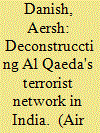

|
|
|
|
|
| Summary/Abstract |
Al Qaeda is characterised by a broad based ideology, a novel structure, a robust capacity for regeneration and a very diverse membership that cuts across ethnic, class and national boundaries. It is neither a single group nor a coalition of groups: it comprises a core base or bases in Afghanistan, satellite terrorist cells worldwide, a conglomerate of Islamist political parties, and other largely independent terrorist groups that it draws on for offensive actions and other responsibilities.
|
|
|
|
|
|
|
|
|
|
|
|
|
|
|
|
| 9 |
ID:
021686
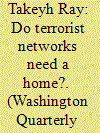

|
|
|
|
|
| Publication |
March 2002.
|
| Description |
97-108
|
|
|
|
|
|
|
|
|
|
|
|
|
|
|
|
| 10 |
ID:
078960
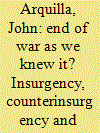

|
|
|
| 11 |
ID:
076943
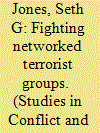

|
|
|
|
|
| Publication |
2007.
|
| Summary/Abstract |
In Iraq and Afghanistan, the United States faced "networked" adversaries: insurgent groups that communicated and coordinated their political and military campaigns without a central command. The rise of networked groups is a direct result of the preponderance of U.S. military power. Consequently, this article asks: What strategies have been most effective in defeating networked groups? To answer this question, the article examines Israeli operations against Palestinian groups during Operation Defense Shield in 2002. It argues that the most effective strategy to defeat networked adversaries is to use networked strategies. In Israel, this meant establishing multiple units to penetrate Palestinian urban areas, swarm together from several directions, and kill or capture militants.
|
|
|
|
|
|
|
|
|
|
|
|
|
|
|
|
| 12 |
ID:
076663


|
|
|
| 13 |
ID:
077786
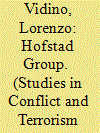

|
|
|
|
|
| Publication |
2007.
|
| Summary/Abstract |
Between 2003 and 2006, members of the so-called Hofstad group planned various terrorist attacks inside the Netherlands, including the assassination of controversial filmmaker Theo van Gogh. Amateurish in its modus operandi and composed mostly of second-generation Muslim immigrants, Hofstad perfectly exemplifies the new terrorist networks that are growing in most European countries. Its perception of Europe as a battlefield of jihad, no less critical than Iraq or Afghanistan, signifies the break from the networks that operated in the continent in the 1990s. Its amorphous structure and lack of ties with international networks make Hofstad the quintessential example of the homegrown terrorism that is worrying European intelligence agencies.
|
|
|
|
|
|
|
|
|
|
|
|
|
|
|
|
| 14 |
ID:
096429


|
|
|
| 15 |
ID:
067057
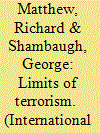

|
|
|
| 16 |
ID:
056789


|
|
|
| 17 |
ID:
133608
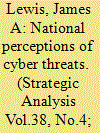

|
|
|
|
|
| Publication |
2014.
|
| Summary/Abstract |
The issue of cybersecurity as an issue for international security has captured the attention of policy makers around the world. A 2011 United Nations (UN) assessment found that only 68 of the 193 UN member states had cybersecurity programmes. By 2012, this had increased to 114 countries. Of the nations with cybersecurity programmes, roughly 40 have publicly identified cybersecurity as a military concern in national military strategies or defence white papers.
|
|
|
|
|
|
|
|
|
|
|
|
|
|
|
|
| 18 |
ID:
083300
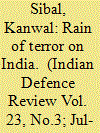

|
|
|
| 19 |
ID:
075626
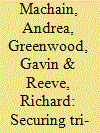

|
|
|
| 20 |
ID:
060763
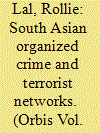

|
|
|